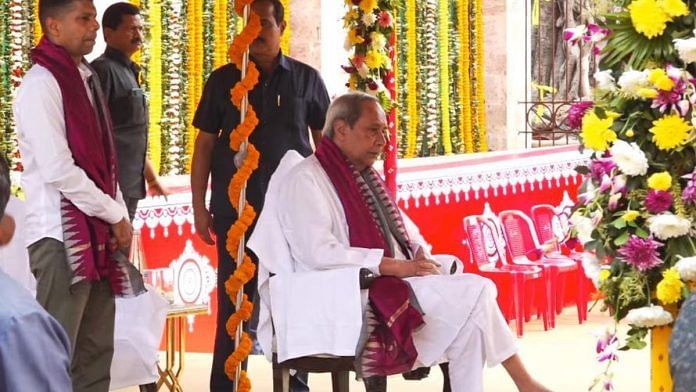New Delhi: The Odisha government led by Chief Minister Naveen Patnaik launched the SAMALEI (Samaleswari Temple Area Management and Local Economic Initiative) Plan — a comprehensive redevelopment project to enhance the temple precinct of Maa Samaleswari Saturday in Sambalpur.
The project aims to provide a unique experiential experience to the visitors and pilgrims by creating an ambience of spirituality, culture, and heritage. It also seeks to boost the tourism-based economy of Sambalpur and Odisha by facilitating economic opportunities for the locals.
The major objectives of the SAMALEI Plan are to celebrate the grandeur of Maa Samaleswari Temple, enhance the devotee’s experience, and develop other projects around the temple.
The project involves the acquisition of 20 shops and 35 households, and the rehabilitation of 250 families from the Ghungutipada slum area.
The project will also create various infrastructure and amenities for the pilgrims and tourists, such as a 1km-long parikrama (circumambulation) path around the temple complex, a queue management system, a shoe stand, a tourist information counter, a cafeteria, bhojanalaya, prasad sevan mandap, and public toilets.
It will also have a new crematorium with upgraded facilities at Mandalia. The other facilities will include organised parking facilities, a vending zone for local artisans and vendors, Khandolite paved pathways, and a landscaped garden inside the temple complex.
Along with these facilities, a heritage corridor with entwined landscape and heritage lighting of international standards, a mahanadi arati platform connected directly with the temple precinct and a watchtower-cum-clock tower for a panoramic view of the temple campus will also come up.
In addition to the temple’s architectural enhancements, the project aims to create a vibrant heritage corridor that will enhance the overall visitor experience and connect various cultural elements surrounding the temple.
The project also incorporates the temple rituals and traditions in its design, such as the deep ghar, parikrama around the sanctum sanctorum, and other rituals associated with the existing pond and the Mahanadi river.
The SAMALEI Plan is expected to have a positive financial impact on the region and the people. The project will increase the footfall to the temple to 20,000 per day from 5,000 in a year, excluding festive days when the pilgrim count will reach 50,000 to 1 lakh.
The project will also benefit over 10,000 local craftsman and weaver families from more than 500 gram panchayats of Sambalpur, Sonpur, Bargarh, Jharsuguda, Balangir and Sundargarh districts.
The project will also boost the economic activities in hospitality, transport, and other ancillary functions in the vicinity of the temple. It will generate direct employment benefits for the locals through the Central Facility Management System that will maintain the project.
The project will also create ancillary infrastructure, which will attract investments across support functions to the city of Sambalpur.
Also Read: In Puri, excitement & burgeoning crowds after opening of Jagannath temple’s new heritage corridor






